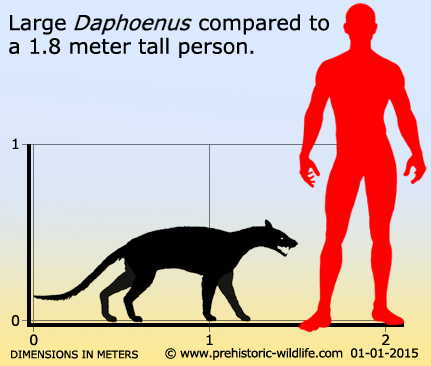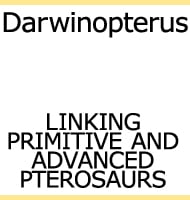In Depth
Although no way near as popular as the large ‘bear dogs’ such as Amphicyon, the large number of fossil remains for Daphoenus actually make it one of if not the best represented of the North American bear dogs. Daphoenus is actually the type genus of a special sub group of amphicyonids called the Daphoeninae, a group of bear dogs that is so far only known from North America.
Like with other bear dogs, Daphoenus was a dog-like animal that also exhibited bear like features and characteristics. One such feature are the plantigrade feet which mean that Daphoenus would have walked with the metatarsals in contact with the ground, giving Daphoenus a low walking ‘flat-footed’ appearance. Later more advanced forms would develop to walk on their toes so that the metatarsal bones would effectively extend the length of the legs. Plantigrade posture seems to have been a trait of more primitive mammals since it is seen in some other groups such as the nimravids. Daphoenus skulls display a strongly developed sagittal crest (a ridge that runs along the back of the skull for the attachment of jaw closing muscles) which is thought to have allowed for considerably more powerful jaw muscles which in turn mean that Daphoenus had a very powerful bite.
As a genus Daphoenus had a geographic distribution that covered most of the western/central United States and much of Canada, although when the genus can be broken down into specific species a different picture emerges. D. vetus and D. hartshorianus are known from the central US, D. lambei ranged between central southern Canada and Texas, D. ruber from California and D. socialis from Oregon. Without other discoveries to indicate different, this all comes together to indicate that not all species were active in the same times and locations as one another, although some cross over between species is possible to likely depending upon the species in question.
The type species D. vetus is usually credited as being the largest while others, particularly earlier species like D. lambei and D. ruber are smaller. One rival to D. vetus in terms of size is D. socialis which was one of the last species to live during the Miocene.
Further Reading
– Additions to the Mammalian Fauna From the Tecuya Beds, California. – Carnegie Institution of Washington Publication 418(4):87-92. – C. Stock – 1932. – A systematic revision of Daphoenus and some allied genera. – Journal of Paleontology 22(5):573-600. – J. R. Hough – 1948. – New amphicyonid carnivorans (Mammalia, Daphoeninae) from the early Miocene of southeastern Wyoming. – American Museum Novitates 3385:1-41. – R. M. Hunt – 2002.










